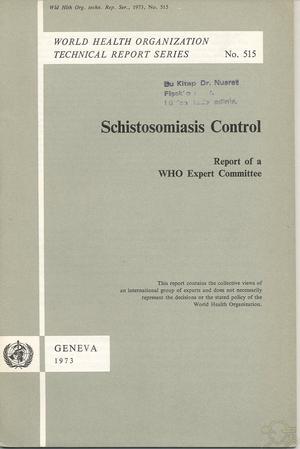Schistosomiasis Control
İÇİNDEKİLERCONTENTS Introduction . 1. Preliminary considerations............. 1.1 Objectives of control programmes....... 1.2 Terms employed related to schistosomiasis control 2. Techniques for measuring the progress of a control programme 2.1 Measurement of human infection........... 2.2 Measurement of morbidity in man.......... 2.3 Other indices for measuring reduction in transmission . . 3. A review of current control programmes...... 3.1 Projects using molluscicides alone...... 3.2 Projects using chemotherapy alone...... 3.3 Projects using environmental modification . . . 3.4 Projects using combinations of control methods 4. Methods of control.................... 4.1 Chemotherapeutic agents available for control programmes 4.2 Molluscicides available for control programmes..... 4.3 Modification of the environment as a control measure . . 4.4 Biological control.................. 5. Factors affecting the design and choice of methods in control programmes . . 5.1 Stability of schistosome transmission................ 5.2 Approaches to reducing disease with limited effect on transmission . . . 5.3 Factors influencing the choice of methods aiming to reduce transmission 5.4 The role of models in the choice and design of control methods 6. Administrative aspects of schistosomiasis control............. 6.1 Need for control......................... 6.2 Need for long-term planning and clear objectives........... 6.3 Availability of trained staff.................... 6.4 Legislation aiding the control of schistosomiasis........... 6.5 Administrative integration of schistosomiasis control efforts...... 6.6 Prevention of schistosomiasis in relation to economic development schemes 7. Conclusions....................... 8. Recommendations...................., Annex. Environmental measures for the control of schistosomiasis .    |



